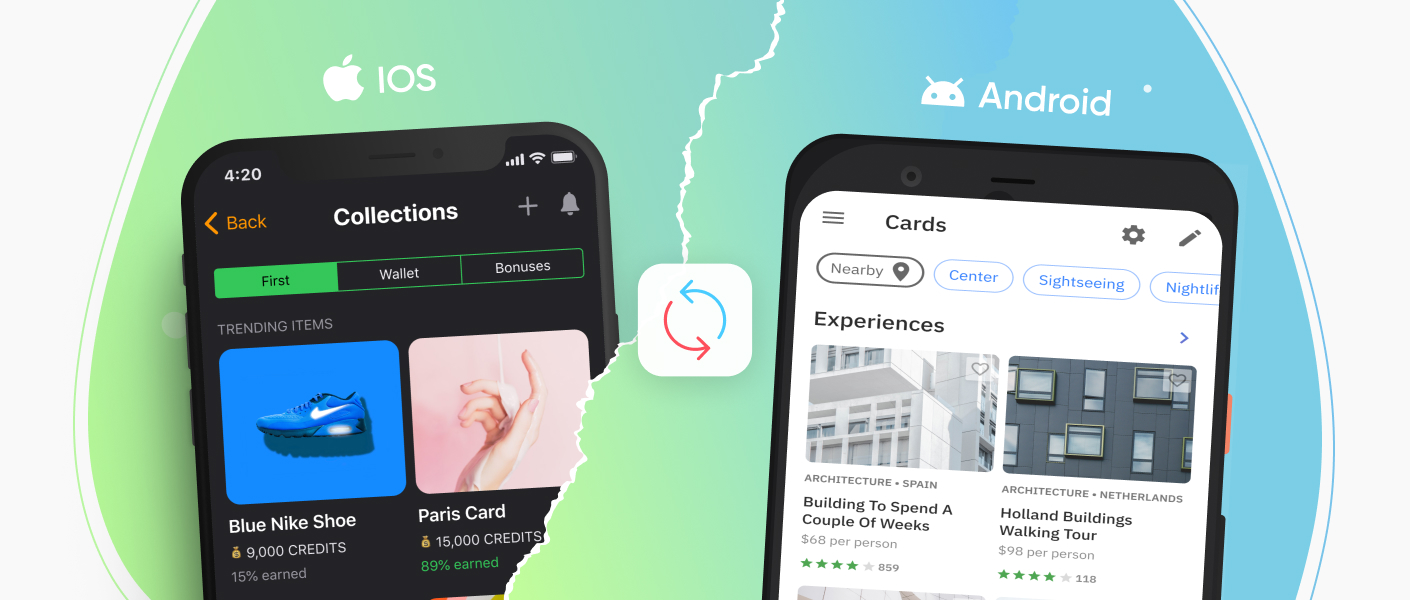When you develop a mobile application, you must first choose a platform. Obviously, you can take the traditional approach and build a native solution. However, if you need to expand the reach of your target audience, as well as reduce the time-to-market and project budget, cross-platform development is the best fit here, which allows you to simultaneously launch two similar solutions at once (usually it is about iOS/Android).
Below we will answer the main question, "What is cross-platform mobile app development?" and talk about the advantages and features of the cross-platform application.
What is Cross-Platform App Development?

So, what is cross-platform development? It is an approach to building applications that allows them to function on multiple operating systems (usually iOS and Android). Although it does not involve writing code in a native programming language, it provides a user experience identical to the native one thanks to a visualization interface and native controls.
As for the practical advantages, as you already understood, this type of software development solves two problems at once: saving time and money. Indeed, due to the fact that developers write about 80% of the total code base for two platforms at once, the budget is reduced by about one and a half times (in comparison with the development of two native applications), and the speed of launching applications to the market increases.
However, this approach also has some drawbacks: the created applications sometimes have insufficient performance compared to native ones (thus, they are not suitable for implementing games that require an instant response - for example, mobile shooters).
In addition, this approach complicates access to hardware and some native features of smartphones - for example, to the camera and the phone book, respectively. Another drawback is the impossibility of fully reproducing some UI design elements typical for a particular OS. Read more about mobile app development services here.
Business Benefits of Cross-Platform Development

Now you know what cross-platform app development is, and it's time to consider the benefits of this approach in detail.
-
Faster product launch. The TTM (time-to-market) metric plays a critical role in the success of digital solutions, as it allows business owners to implement and upgrade their products much faster than competitors on both platforms (especially when it comes to startups). Learn more about startup development here.
-
Maximum target audience coverage. When your target audience is almost evenly distributed between two mobile platforms, an app made with this approach will help you to reach the widest segment of users as quickly as possible.
-
Reduced budget. Since this approach involves using the same software tools for both platforms and platform-independent programming languages, you will not need to hire two development teams at once. In addition, the rates for native developers tend to be higher, which further enhances the benefits of this approach.
-
Ease of deployment and maintenance. Due to the fact that a single code base represents these apps, the deployment procedure and their further modernization are as simple as possible. This is obvious since all the necessary changes and bug fixes are made in only one application instead of two.
-
The simplicity of the development process. And finally, as we said above, this approach positively affects the speed of building an application. After all, developers have to work on a single code base instead of separately creating two projects from scratch at once and coordinating them with each other. And even though they will have to take into account the nuances of both operating systems, the development process will still be faster.
Cross-Platform Technology and Frameworks

Finally, let's find out what frameworks are best-used in mobile cross-platform development.
-
React Native. This is probably the most popular framework actively developed by the Facebook team. Its distinctive features include support for Virtual DOM, which provides instant rendering with minimal server load.
-
Ionic. It is a front-end HTML framework built on top of AngularJS and Cordova. Developers need knowledge of NodeJS to work with it. The advantage of this solution is the modular structure of apps.
-
Xamarin. It is a popular framework that uses the C#. It provides access to all the capabilities of the platform SDK and the native UI creation engine. Apps made on it are very fast and look like native ones.
-
Flutter. It is an SDK for creating high-quality, intuitive GUIs on iOS and Android platforms. This is a Google product. By using the Dart programming language and human interpretation into the Java virtual machine, this SDK can significantly reduce the development time for complex interfaces.
Conclusion
We hope now you understand what cross-platform development is. As you can see, it allows business owners to optimize the process of building, launching, and maintaining mobile applications, while reducing the overall project budget. Of course, this approach has some nuances and is not universal.
Nevertheless, it turns out to be a lifesaver in many cases, especially when it is necessary to shorten the time-to-market as much as possible. If you are interested in realizing your business idea with this approach, contact us now!
FAQ
Now, to summarize the above, we will answer two of the most frequently asked questions related to the topic of this article.
What is cross-platform development?
This is an alternative approach to native software development, which implies the creation of a single code base that can function on several operating systems at once. To do this, developers use platform-independent programming languages and specialized frameworks in the process.
What are the advantages of cross-platform development?
The main advantages of this approach include:
-
quick launch to the market;
-
reduction of the project budget;
-
simplified development process;
-
easy deployment and upgrade;
-
maximum coverage of the target audience.